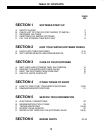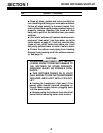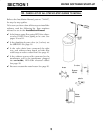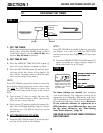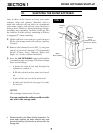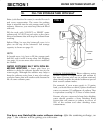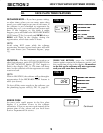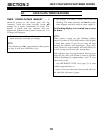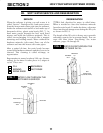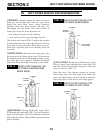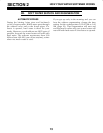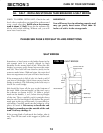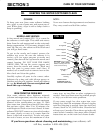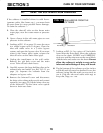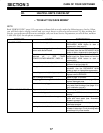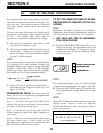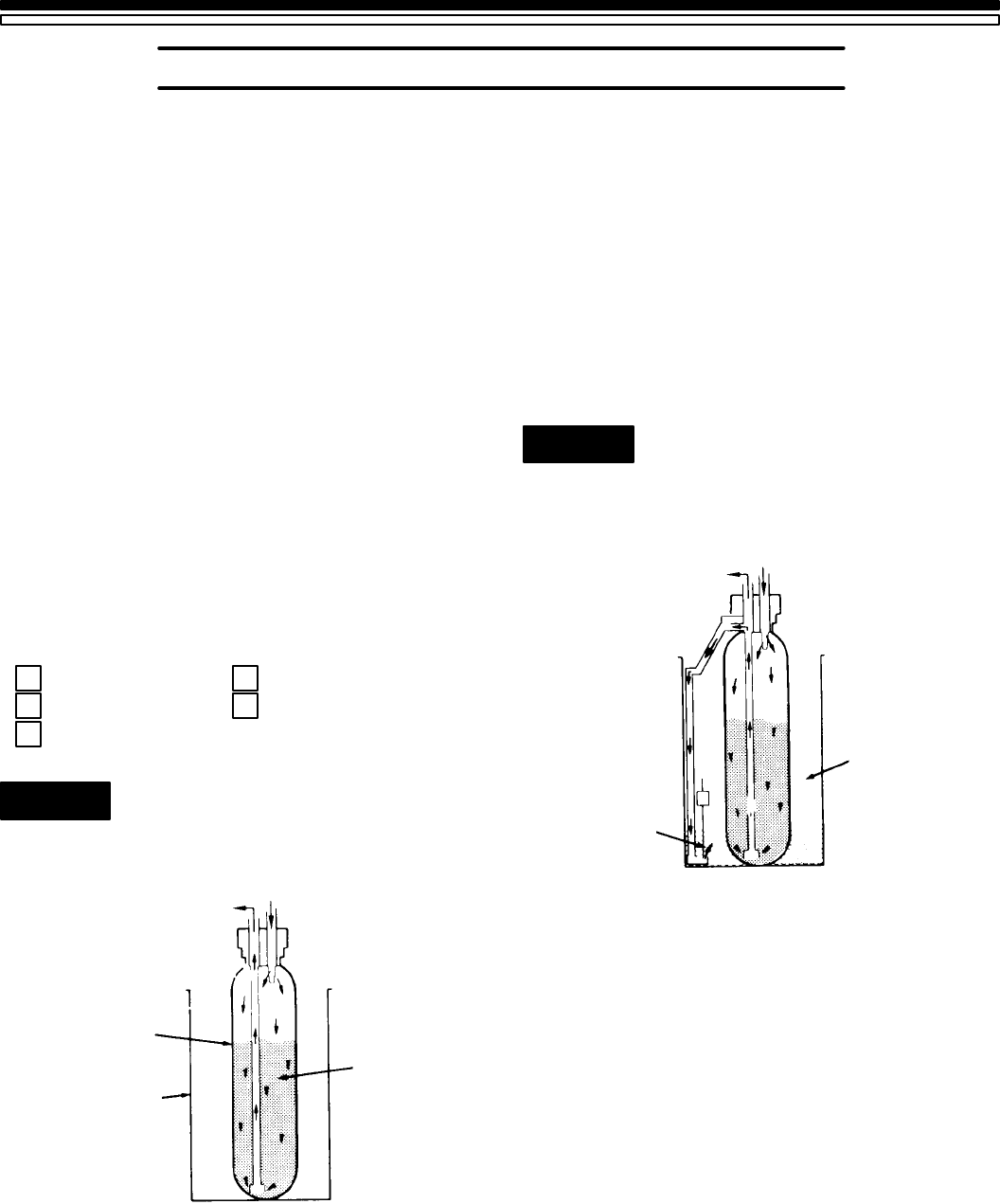
HOW YOUR WATER SOFTENER WORKS
SECTION 2
11
2B. SOFT WATER SERVICE AND REGENERATION
SERVICE
When the softener is giving you soft water, it is
called Service". During service, hard water comes
from the house main water pipe into the softener.
Inside the softener resin tank is a bed made up of
thousands of tiny, plastic resin beads (FIG. 7). As
hard water passes through the bed, each bead
attracts and holds the hardness minerals. This is
called ionĆexchanging. It is much like a magnet
attracting and holding metals. Water without the
hardness minerals (soft water) flows out of the
softener and into the house soft water pipes.
After a period of time, the resin beads become
coated with hardness minerals and they have to be
cleaned. This cleaning is called recharge, or
regeneration.
Regeneration is started at about 2:00 a.m. (factory
setting) by the timer. It takes place in 5 stages or
cycles. These are:
FILL
BRINING
BRINE RINSE
BACKWASH
FAST RINSE
1
2
3
4
5
FIG. 7 WATER FLOW THROUGH THE
SOFTENER IN SERVICE
Resin Bed
Resin Tank
Salt Storage
Tank
Soft Water
OUT
Hard Water
IN
REGENERATION
FILL: Salt, dissolved in water, is called brine.
Brine is needed to clean the hardness minerals
from the resin beads. To make the brine, soft water
flows into the salt storage area during the fill cycle
as shown in FIG. 8.
The length of the fill cycle is factory set to provide
softening capacity for an average family. You can
reset this time when fineĆtuning" the water
softener, pages 18 through 20.
FIG. 8 WATER FLOW THROUGH THE
SOFTENER IN FILL
Salt
Storage Tank
(salt not shown)
Hard Water
IN
Soft Water
OUT
Fill Water



